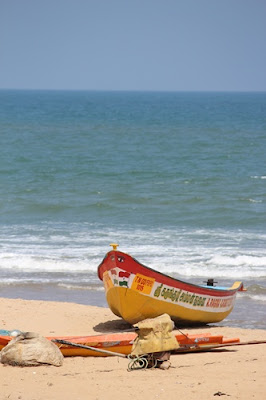Whoops! Just going through my old posts and realised that I'd never got around to actually putting this one (the last in my North East series) up on the blog. Still, better late than never as they say...
26 January was Republic Day in India, one of the biggest national holidays celebrating the country's independence from colonial rule. In Delhi it is celebrated with famously extravagant parades along the Rajpath, something I'd been planning to go to see when the time rolled around. However, in the event I was hundreds of miles away in Shillong, the capital of Meghalaya.
This turned out to be a mixed blessing. On the plus side, it was a beautiful sunny day and the air was gloriously pure in a way I'm pretty sure it never gets in Delhi. On the minus side, EVERYTHING was closed. Having failed to plan for this level of dedication to the concept of a "national holiday", I faced starvation for a while until I finally found an enterprising street purveyor of omelettes. Up till now I had steadfastly avoided street food in India in the (not unreasonable) belief that this was a good way to avoid the infamous Delhi belly. But it's amazing how quickly one's resolve can fold in the face of a 24 hour fast as an alternative. Mental note: next holiday, stock up the day before.
The other thing about Republic Day in India (or at least in Shillong) is that the cars vanish from the roads. Literally. While in the UK public holidays bring roads to a standstill as everyone tries to get away for the day, in Shillong there was an amazing (and ever so slightly creepy) reverse transformation: thoroughfares that the previous day had been stuffed to the gills with honking autos were suddenly abandoned stretches of empty tarmac.
26 January was Republic Day in India, one of the biggest national holidays celebrating the country's independence from colonial rule. In Delhi it is celebrated with famously extravagant parades along the Rajpath, something I'd been planning to go to see when the time rolled around. However, in the event I was hundreds of miles away in Shillong, the capital of Meghalaya.
This turned out to be a mixed blessing. On the plus side, it was a beautiful sunny day and the air was gloriously pure in a way I'm pretty sure it never gets in Delhi. On the minus side, EVERYTHING was closed. Having failed to plan for this level of dedication to the concept of a "national holiday", I faced starvation for a while until I finally found an enterprising street purveyor of omelettes. Up till now I had steadfastly avoided street food in India in the (not unreasonable) belief that this was a good way to avoid the infamous Delhi belly. But it's amazing how quickly one's resolve can fold in the face of a 24 hour fast as an alternative. Mental note: next holiday, stock up the day before.
The other thing about Republic Day in India (or at least in Shillong) is that the cars vanish from the roads. Literally. While in the UK public holidays bring roads to a standstill as everyone tries to get away for the day, in Shillong there was an amazing (and ever so slightly creepy) reverse transformation: thoroughfares that the previous day had been stuffed to the gills with honking autos were suddenly abandoned stretches of empty tarmac.
Where'd everybody go?
Since urban India is pretty much a synonym for heaving, bumper-to-bumper chaos, this sudden silence and emptiness was kind of eerie. Until I found that every other street had been transformed into an impromptu cricket pitch, and the exuberance of the cricketers enjoying a sunny holiday was infectious.
A few local radicals, though, departed from tradition by - horrors! - not playing cricket:
(Note the half-timbered architecture which Shillong is famous for, although as the photos below show the modern city adheres to the boxy style favoured elsewhere in India in recent years)
Anyway, it was kind of nice to see India at play - and it reminded me how most of the time what I see is India at work. Here are a few more shots of my sunny, relaxed stroll around the quiet streets of Shillong.
Still open for food.
Colonial-era Shillong was built around a lovely little lake which today is preserved as a park. It was officially closed, but half the town seemed to have hopped over the locked gate to have a holiday stroll. So I did too.
I'm not actually sure what exactly this is! It was sat by the gate at the entrance to the lakeside park - can anyone enlighten me?
Even on a holiday, the entrepreneurial spirit is alive and well in India
They looked a lot less intimidating when they weren't posing!
Game over. Who's lost their shoes?
Shillong's cathedral, which looks like a mix between an English country pub and an English country church. One of those strange reminders that the English were once in charge here...it just seems bizarre now. Beautiful building though.
This rotting piece of clothing, strung across a fence by the side of the road, just caught my eye. I wonder who wore it and why they abandoned it here.
Yup, they spotted me.
Street kids in a poorer district of Shillong. The one in red - a boy I presume, though it's hard to tell - struck me as one of those children you see too often here, whose eyes are too old for their faces. He could only have been about six, but those eyes locked straight on me with a singularity of purpose that befitted a veteran of money-making. It doesn't get any less unnerving the more you encounter it. Some kids just have to grow up fast.
And some luckier ones get to roll down Shillong's hills on a skateboard instead.


















































































